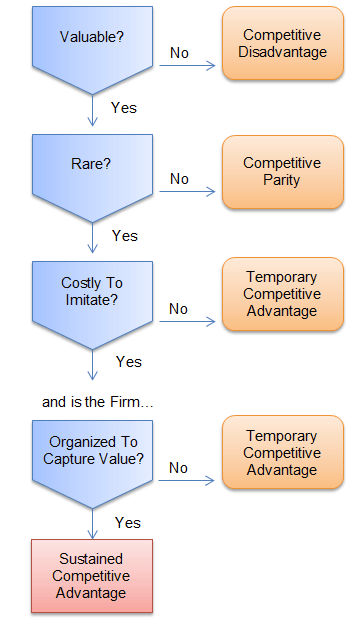A seamless experience between different operators, modes of transport, regions and cities on one and the same ticket has made travelling with public transport in Norway an attractive alternative to the car. The story of Entur as a state-owned company is a story of digital transformation and continuous delivery of added value to travellers by taking control of the development of a national digital platform for public transportation and mobility services. By offering a integrated solution for multimodal travel as a service (Mobility-as-a-Service), bus-train operators, public transport companies and mobility service providers can use one plattform to offer travellers seamless experience between different modes of transport. The international recognition and interest that Entur has received is a story of a new paradigm of digital service development in public sector.
Background
The article is based on an interview with Hanne Nettum Breivik, who is director of market and mobility, and was the project manager for the National Travel Planning Project – NRP at the state-owned company Entur AS (corporation). Entur is responsible for providing a national digital platform that collects information and manages timetables, stops, ticket prices, ticket sales, real-time data, positioning of modes of transport and more. The digital platform functions as a national wide system that are used by around 60 bus and train operators, public transport companies and firms that offer mobility service solutions. Thanks to the national platform, transport operators do not have to provide their own systems and integrations between cities, regions and across national borders (Sweden-Norway). The Norwegian ministry of transport – Samferdselsdepartementet (SD), initiated the deregulation of the Norwegian railway sector on behalf of the then government, with the objective to make public transportation more attractive by providing a national wide system solution for multimodal travel planning and ticketing.
National trip planing
The original plan was that train operators and public transport companies would procure an all-encompassing solution for travel planning and ticket management that were available on the market. According to Nettum Breivik, the NRP project was originally estimated to take 6-8 months to collect national travel and ticket information into a new database for the procured system. At the time of the project start-up – 2014, a system architecture review was carried out to assess the suitability of the all-encompassing solutions that were on the market. The review identified that the architecture of the systems was not suitable for further development as they were considered outdated and would represent an obstacle to achieving the levels of ambition that the NRP project wanted to achieve. Another obstacle was that data from the existing system was stored in a national data standard that proved difficult to further develop and harmonize with the EU standard NeTEx for public transport scheduling. In addition, previous experience from authorities and regions in Norway was that system providers of standardised travel planning solutions did not prioritise their need for adaptations for Norwegian conditions and that it took a long time before they were implemented. As an example, Nettum Breivik highlights the discussion with a major system supplier, which several regions used for travel planning, and how they could not offer an estimate when the NeTEx standard could be supported. During meetings with several different system suppliers for evaluating the various proposals, NRP’s new technical project manager and system architect were present. The conclusion of the evaluation was that none of the suppliers presented a sufficiently good solution that could fulfill the set of requirements and the overall project objectives. Amongst the requirements that were listed was the ability for fast adaptations of the system to accommodate needs of travellers, support for open EU standards and scalable system architecture.
The disqualification of the providers’ solutions meant that the original plan was no longer viable. The only remaining option was to focus on in-house development based on open source components and standards, without a contract with a provider and specified end date. When this was presented to the project board it was difficult to convince the members that the new plan did not include an end date, SLAs (Service Agreement Level), fixed budget and agreements with suppliers that could be held accountable. Nettum Breivik says that a lot of time had to be spent explaining that digital development is an ongoing process to deliver added value to end users, and does not correspond well with the government’s project management model, which requires fixed costs and a clear start and end date.
Digital services are by definition never finished. But when you start a government project, they want a start date, an end date, and a fixed cost.
In order to show decision-makers that a self-developed digital platform based on open source and standards was feasible, an minimal viable product (MVP) that included nation wide trip planing information was developed in six months. An important part of the rapid development was the utilisation of existing open source components to build a scalable system architecture that could serve as a base for further development. An example of re-use was an open source user interface (front-end), developed in Finland for travel planning. The achievement to develop a new digital platform in a relatively short time, meant that the NRP project received the go-ahead from decision-makers to continuing the development without a fixed end date and cost.
Initially, the platform was built by hired personnel because Entur as an organization was not established at the start of the project. Nettum Breivik, who at the time was employed by Ruter before she joined Entur in 2017. The Norwegian Public Roads Administration (Statens Vegvesen), which was initially responsible for the project, hired her as project manager and contracted the staff via a government framework agreement. When Entur was created, the travel ticket department from former NSB (Norwegian State Railways) with its 400 employees and sales offices was merged with the 15-person development team for the NRP project in 2017. She describes it as an interesting mix of people, but also an advantage when the responsibilities where gathered under the same roof; as travel planning is the first step in the process of ticket sales. The merger has brought about synergistic effects since Entur is now responsible for the entire process, including the obvious advantage that existing and newly established transport providers do not need to create their own ticketing solutions, hire staff and provide ticket sales offices (located at the five largest stations).
Incremental development – the key to digital transformation
Today, Entur is an ambassador for how open source and standards are used within public organisations and has spread far beyond the Norwegian public transport sector. Among other things, Google describes how Entur uses their cloud platform for the national public transportation. Several research papers are in progress – some are already published – on how open source and standards are being used at Entur to create a digital platform for multimodal travel. In order to save resources, the fast internal iterative development process needs to be balanced against using existing open source components. An example of where Entur has invested a lot of time and resources in an existing open source project is OpenTripPlaner, which manages travel planning and is a central component of the NRP project.
Entur’s CEO advocates incremental service development and has delegated the responsibility to the development teams to prioritise work. Trust from the management downwards in the organisation is important for empowering the 21 different development teams today. Product owners for the various teams are responsible for prioritising the work. There are no internal billing or structural barriers for individual teams to coordinate and collaborate with each other. However, product development managers are required to communicate and receive approval from management if the development involves several teams; it is always a balance between swiftness or involving higher level managers in the decision process. According to Nettum Breivik, the incremental cross-organisational development between teams is the key to continuously delivering added value to end-users.
Another advantage of the incremental development based on trust, is to let the developers and teams themselves decide and explore how new technology can contribute to value creation. For example; by exploring new technology or trying open source components which cannot be planned or by requested a budget for in advance, because then the opportunity has already been lost. Government budgets are allocated per departement and agencies, while digital services span multiple departement, sectors and create values horizontally through synergies and coordination. The government budget process and governance model is not compatible with digital service development because it cannot handle spending of funds in one area when creating value in another, even if it benefits the overall objective.
State budget processes and planning of what is to be done several years in advance do not fit well with digital development.
Nettum Breivik emphasises that the public sector should get better at defining MVP:s and continuous delivery, because value creation is a constantly ongoing process. If something were to be 100 percent ready, it is probably obsolete and irrelevant at launch, especially when it comes to digital service. It does not have to mean that you need to compromise on quality or safety if that is a priority.
Experience from the NRP project she wants to pass on is to break down complexity and larger use-cases across several teams working horizontally with a focus on the end-user with clearly defined MVPs. Instead of distributing the work to different departments and business areas with their own processes, which creates obstacles to continuously deliver added value. Another lesson learned is the importance of communicating to non-technical decision makers what the teams do and how it contributes to reaching the overall objective. After the restart of the NRP project, it took time and resources to build a completely new digital platform from scratch. Nettum Breivik describes it as a laborious and time-consuming process to explain to decision-makers from authorities and departments about what it means to build a scalable system architecture and digital platform from the ground up that can achieve the goal of enabling seamless national public transportation.
It was an epic meeting [with the state department] when my colleague said you need to send someone with better skills next time. But it is also up to us to try to describe the development work and what is happening below the surface.
On the question if the in-house development has been lead to cost cutting compared to procuring a standardised solution, she has no facts because no system suppliers could offer a sufficiently good solution that corresponded to Entur’s level of ambition. She points out that Entur has acquired the flexibility and capability to keep pace with new mobility solutions services and respond quickly to customer demands. To offer a solution that handles trips across regional borders with several modes of transport and companies on one ticket comes with a cost. Nettum Breivik sees the recognition from the public transport sector and from researchers who want to study Entur’s digital service offering as proof that the project has created something unique and wants to recreate the transformation themself. In conclusion, she would have liked to see more support – especially from other Nordic countries, in the development of a digital platform based on open European standards. Especially with the objective to offer a competitive solution that spans national borders and can be an alternative to air travels. But she hopes that Entur can capitalise on upcoming Nordic initiatives that focus on reusing and building on open source solutions used in the NRP project.
If Nordic public transport data could be collected on the same open standard, it would enable Nordic travel planning services and offer travellers the opportunity to travel easily across national borders.
Summary
The implementation of the NRP project shows how incremental development and control over an operationally critical system have been important factors in developing a digital platform for public transportation and mobile services in Norway. More specifically, the decision to build the platform on open standards (NeTex/SIRI) and the re-use of open source components and solutions have been crucial to meet the project’s ambition level. The delegation of responsibility to the teams to self-organise horizontally in the organisation has contributed to agility and malleable organisational structures which has proven significant to exploring new technology, software components and implement them it in the development process.
One explanation for the iterative development process is due to the transparency and trust that are central to open source projects, where participants quickly give each other feedback and collaborate to solve problems and help each other. This interaction with the open source community also contributes to motivate employees, create high-quality software code, accelerates learning, sharing of knowledge and resources across organisational boundaries that are difficult to achieve with contractual agreements with a system vendor. The next article will explore in more detail how open source and standards have been central to the development of Entur’s digital platform with NRP’s technical project manager and system architect.
The success of the NRP project regarding continuous delivery of value to end-users has been important in the creation of a national digital platform for public transportation and mobile services. In Nettum Breivik’s new role at Statens Vegvesen, she will be part of a program directly under the new director general, to carry forward the digital service development philosophy and enable change at a larger authority that has been accused of being old-fashioned, slow and bureaucratic.
The content is created by Clear Byte and is licensed under a Creative Commons Attribution-NonCommercial-ShareAlike 4.0 International License.

















